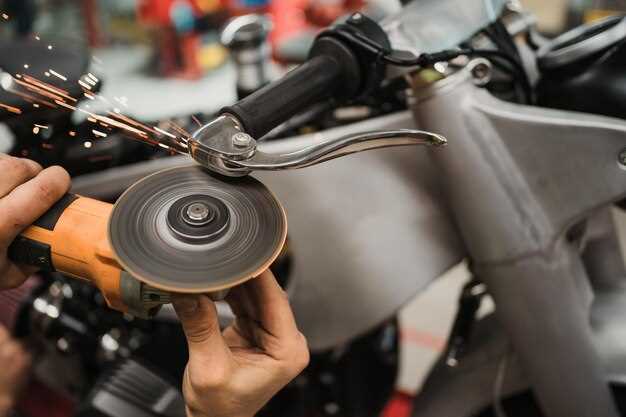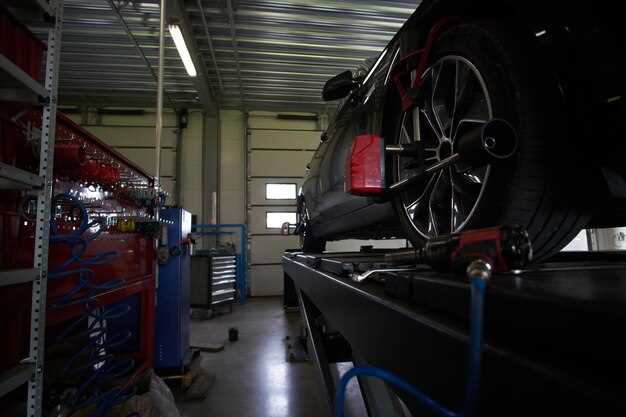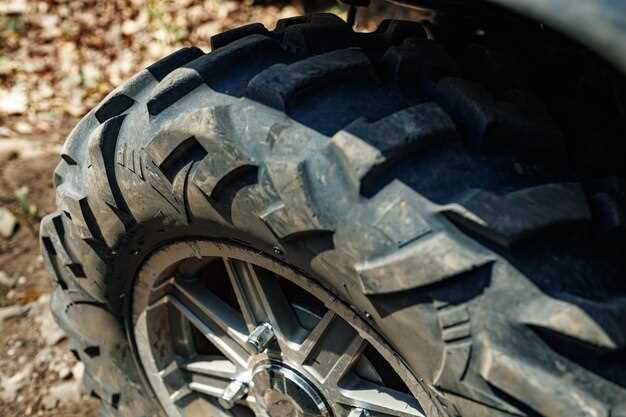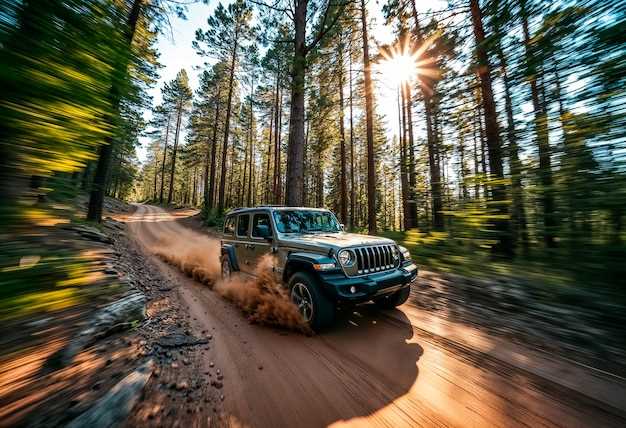
As the world of motocross continues to captivate fans globally, 2024 promises to be an exciting year filled with thrilling competitions and exhilarating performances. This year marks the return of some of the most prestigious motocross events that combine skill, speed, and strategy, attracting top athletes from around the globe. Whether you’re a seasoned fan or new to the sport, these events offer an unforgettable experience that highlights the adrenaline-fueled passion of motocross.
From the dirt tracks in the United States to international venues showcasing riders from various countries, the motocross calendar in 2024 is packed with key events that you won’t want to miss. Each event features unique challenges and competitive dynamics that push riders to their limits, making it essential to stay updated on race schedules, athlete performances, and venue specifics.
In this article, we will explore the top motocross events to watch in 2024, detailing what sets each competition apart and why they deserve a spot on your must-watch list. Prepare to immerse yourself in the action, as we delve into what makes these events spectacular and how they play a significant role in shaping the future of motocross.
Key Dates for Major Motocross Championships
The 2024 motocross season is set to showcase thrilling competitions across various championships. Here are the essential dates you need to mark on your calendar to ensure you don’t miss any of the action.
AMA Supercross Championship kicks off on January 6, 2024, at Angel Stadium in Anaheim, California, promising an electrifying start to the year. Races will continue until the finals on May 4, 2024, in Las Vegas, making it a five-month period filled with intense rivalries.
Motocross World Championship (MXGP) will commence its season on March 3, 2024, at the 2024 Grand Prix of Argentina. This championship includes multiple rounds across various countries, culminating in the final race on September 22, 2024, in Spain.
Lucas Oil Pro Motocross Championship will begin its series on May 18, 2024, in Sacramento, California, and will run until August 24, 2024. The championship will feature races at some of the most iconic outdoor tracks in America, making it a must-watch event for fans.
Make sure to follow these dates closely to experience the exhilarating races, top-notch riders, and the spirit of competition that define the world of motocross in 2024.
Notable Riders to Watch This Season
This season promises to showcase some of the most talented motocross riders in the world, each aiming to make their mark on the competitive circuit. Here are a few standout competitors to keep your eye on:
Chase Sexton has been a rising star in the motocross community, demonstrating remarkable consistency and agility on the track. His ability to navigate tight turns and maintain speed through challenging sections sets him apart from his peers. With recent improvements in his performance, many fans anticipate that he will be a top contender for the championship.
Eli Tomac, a veteran in the sport, continues to showcase his exceptional skills and experience. Known for his explosive start and ability to recover from setbacks, Tomac remains a formidable opponent. His strategic racing style and resilience make him a perennial favorite in any event he competes in.
Jett Lawrence, with his youthful enthusiasm and innovative techniques, has captured the attention of fans and analysts alike. His fearless approach and ability to execute complex maneuvers under pressure make him one of the most exciting riders to watch this season. Lawrence’s recent performances signal that he is ready to cement his future in the sport.
Ken Roczen is another name that resonates within the motocross community. His comeback after overcoming injuries has been inspiring. Roczen’s technical proficiency and deep understanding of race dynamics give him a distinct edge on the track. As he regains his form, many experts expect him to challenge for podium finishes throughout the season.
Lastly, keep an eye on Malcolm Stewart. His recent progression and growing confidence have made him a rider to watch. Stewart’s unique riding style and ability to adapt quickly to various race conditions could lead to a breakout season for him.
As the 2024 motocross season unfolds, these riders are sure to deliver thrilling performances, making every race a must-watch event for fans around the world.
Understanding the Different Motocross Classifications
Motocross is a thrilling sport with various classifications that cater to different rider skill levels and bike specifications. Each class is designed to provide a competitive environment for participants, ranging from beginners to seasoned professionals.
The most well-known motocross classifications include the 250cc and 450cc classes. The 250cc class is primarily for younger and less experienced riders who compete on bikes with engines not exceeding 250cc. This class serves as a crucial stepping stone for racers aiming to advance to more competitive categories. The bikes used in this class generally offer lighter weight and the opportunity for riders to hone their skills.
On the other hand, the 450cc class features more powerful motorcycles, creating an environment for more experienced riders. The increased horsepower and speed make races in this class highly competitive and exciting to watch. Riders in the 450cc class often have extensive experience and skills, as the demands of handling these powerful machines are significantly greater.
In addition to these primary classifications, there are also specialized divisions such as Women’s Motocross and Youth classes. The Women’s class enables female riders to compete at professional levels, fostering inclusivity within the sport. Meanwhile, Youth classes are specifically designed for younger riders, categorized by age and bike size to promote safety and encourage talent development.
Furthermore, amateur motocross events often include classifications based on rider expertise, such as novice, intermediate, and expert categories. This segmentation allows racers to compete against others of similar skill levels, enhancing the overall competitive experience.
Understanding these classifications is essential for fans and participants alike, as they form the framework for competitions and influence the dynamics of each race. By recognizing the different classes and their respective characteristics, spectators can appreciate the skill and dedication required to succeed in motocross.
Where to Stream or Watch Motocross Events Live
Motocross enthusiasts have several options for streaming or watching live events in 2024. Here’s a comprehensive guide to ensure you don’t miss any action.
-
Broadcast Television
Many major motocross events are broadcast on national television channels. Check local listings for:
- FOX Sports
- ESPN
- Motorsport.tv
-
Online Streaming Services
Several streaming platforms offer live coverage of motocross events. Subscriptions may be required:
- Peacock: Live streams of selected motocross races.
- Paramount+: Features some exclusive events and replays.
- FuboTV: Offers a variety of sports channels that broadcast motocross.
-
Official Event Websites
Many motocross events stream directly on their official websites. Features you might find:
- Live timing and scoring
- Free highlights and replays
- Exclusive behind-the-scenes content
-
Social Media Platforms
Follow the events on social media for live updates. Key platforms include:
- Facebook: Many events host live streams and interactions.
- YouTube: Check for live broadcasts and official channels.
- Twitter: Stay updated with real-time tweets and commentary.
-
Dedicated Apps
Utilize mobile applications designed for motorsport fans, such as:
- MX Sports: Provides updates and scheduling for motocross events.
- motocross.com: Features a mobile-friendly interface for watching races live.
With multiple platforms available, fans of motocross can enjoy exhilarating race coverage from the comfort of their homes or on the go. Make sure to check each service for availability and subscription details ahead of the events in 2024.
Highlights from Previous Seasons that Set the Stage for 2024
The past motocross seasons have delivered a wealth of unforgettable moments, shaping the competitive landscape for 2024. One of the standout events was the 2023 AMA Supercross Championship, where intense rivalries among top riders like Eli Tomac and Chase Sexton captivated fans. Their battles showcased not only remarkable skill but also strategy, setting a high bar for the upcoming season.
Additionally, the 2022 Motocross of Nations proved to be a pivotal moment, highlighting the importance of team dynamics in the sport. The triumphant performances of nations such as France and the USA emphasized the emerging talent across the globe. This competition energized fans and fueled aspirations for the next generation of motocross athletes.
Innovative bike technology also played a significant role in the previous seasons. The introduction of advanced suspension systems and lightweight frames by leading manufacturers allowed riders to push their limits, resulting in faster lap times and more thrilling races. This technological evolution promises to elevate the competition even further in 2024.
Moreover, the rise of social media engagement has transformed how fans interact with the sport. Athletes are now more accessible, sharing their experiences through platforms, which has led to increased support and anticipation for upcoming events. This fan engagement is set to bring a vibrant atmosphere to the tracks in 2024.
Looking ahead, the momentum built from these highlights creates a thrilling anticipation for the upcoming motocross season. Fans can expect heightened rivalries, cutting-edge technology, and an engaged community ready to rally behind their favorite riders.
How to Prepare for Attending a Motocross Event

Attending a motocross event can be an exhilarating experience. To make the most of it, proper preparation is essential. Here are some key steps to consider before you go.
1. Plan Your Travel
Determine the location of the event and plan your travel accordingly. Consider the date, time, and distance. If you’re driving, ensure your vehicle is in good condition. If you’re flying, book your tickets early to find the best rates.
2. Choose the Right Gear
Wear comfortable clothing that is suitable for outdoor activities. Consider layers for varying weather conditions. Don’t forget to bring protective gear like sunglasses and sunscreen to shield yourself from sun exposure.
3. Bring Essential Supplies
Prepare a checklist of supplies to bring with you. Here are some essentials:
| Item | Description |
|---|---|
| Ear Protection | Noise-canceling headphones or earplugs to protect against loud engines. |
| Seating | A portable chair or blanket for comfortable seating. |
| Water | Stay hydrated by bringing a reusable water bottle. |
| Snacks | Pack easy-to-carry snacks to keep your energy up. |
| Camera | Capture memorable moments with a camera or smartphone. |
4. Arrive Early
To get the best viewing spots and avoid crowds, arrive at the event early. This will give you time to familiarize yourself with the venue, explore vendor booths, and partake in any pre-event activities.
5. Familiarize Yourself with the Schedule
Before the event, check the schedule for race times and event activities. Knowing when your favorite riders are competing will help you plan your day better.
6. Engage with the Community
Motocross events are communal. Engage with fellow fans, share experiences, and learn more about the sport. Don’t hesitate to chat with riders and teams if opportunities arise.
By following these steps, you will be well-prepared to enjoy an unforgettable motocross experience in 2024. Happy racing!



























